The carrot is a root vegetable, usually orange in color, though purple, black, red, white and yellow cultivars exist. Carrots are a domesticated form of the wild carrot, Daucus carota, which is native to Europe and southwestern Asia. Take a look below for 28 more fun and interesting facts about carrots.
1. The carrot plant probably originated in Persia and was originally cultivated for its leaves and seeds.
2. The most commonly eaten part of the carrot is the taproot, although the greens are sometimes eaten as well.
3. The domestic carrot has been selectively bred for its greatly enlarged, more palatable, less woody textured taproot.
4. The carrot is a biennial plant in the umbellifer family Apiaceae. At first, it grows a rosette of leaves while building up the enlarged taproot.
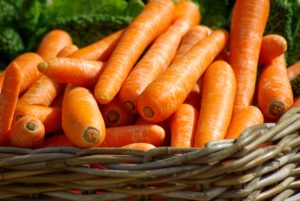
5. Fast growing carrot cultivars mature within three months of sowing the seed, while slower maturing cultivars are harvested four months later.
6. The roots of a carrot contain high quantities of alpha and beta carotene, and are a good source of vitamin K and vitamin B6, but the belief that eating carrots improves vision is a myth put forward by the British in World War II to mislead the enemy about their military capabilities.
7. Romans and Ancient Greeks believed carrots to be an aphrodisiac.
8. Caligula held a banquet of carrots for his Senate and served only dishes made of carrots in the hope that it would make them, “rut like wild beasts.”
9. Carrots were not orange until the Dutch worked to cultivate the strain for the ruling House of Orange.
10. Earlier versions of carrots were white, purple, red, yellow, green or black.
11. Carrots were first grown as a medicine and not a food.
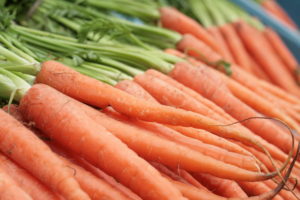
12. the longest ever grown carrot was 19 feet and 1 inch. The heaviest weighed in at 18.9 pounds.
13. Eating too many carrots can lead to a condition called carotenemia, causing the skin to turn yellowish orange.
14. The cultivated carrot first appeared in Britain in the 1400s, but the Romans brought wild carrots in the second century.
15. Cultivated carrots originated in Afghanistan.
16. Carrots are one of the ten most economically important vegetable crops in the world.
17. In 2014, world production of carrots, combined with turnips, was 38.9 million tons, with China producing 45% of the world,which is about 17.3 million tons.
18. Carrots can be stored for several months in the refrigerator or over the winter in a moist, cool place.
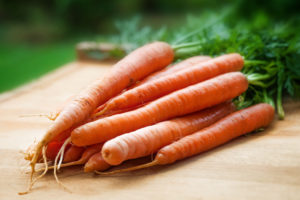
19. For long term storage, unwashed carrots can be placed in a bucket between layers of sand, a 50/50 mix of sand and wood shavings, or in soil.
20. The word “carrot” is first recorded in English circa 1530 and was borrowed from Middle French “carotte”, itself from Late Latin “carota”, from Greek “karoton”, originally from the Indo-European root “ker” meaning “horn”, due to its horn-like shape.
21. Carrot seeds are so small that about 2,000 seeds can fit in a teaspoon.
22. The amount of pressure you use to bite into a carrot is the same amount of pressure you would need to bite off someone’s finger.
23. The average person eats 17 pounds of carrots per year.
24. Most baby-cut carrots are made from large carrots that have been peeled and trimmed. The trimmings are used in salad mixes, juices, and other carrot products.
25. The carrot was one of the first vegetables to be canned in the early 1800s.
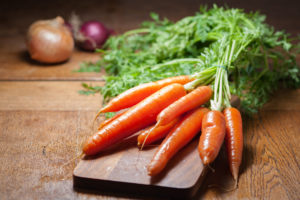
26. Carrots are used in Carrot Cake because during the Medieval period, sweeteners were scarce and expensive, and carrots contain more sugar than any other vegetable besides the sugar beet.
27. In the 1970s, Basil Brown, a healthy food advocate from England, drank himself to death by consuming 10 gallons, or 38 liters, of carrot juice in 10 day, causing him to overdose on vitamin A.
28. Carrots are sweeter in the winter. Sugar acts as a natural anti-freeze and can lower the freezing point of water. Carrots increase their sugar content to defend against cold weather.

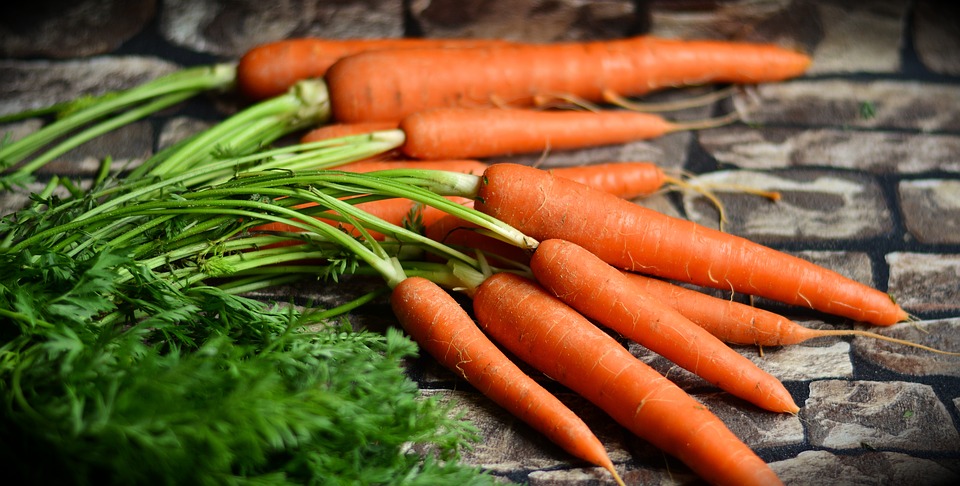



One Comment
Pingback:
February 28, 2018 at 2:07 pm